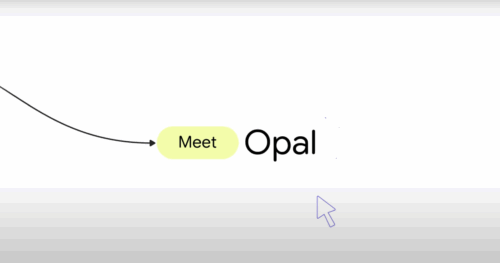
No-code Tool Lets Users Create Mini Web Apps Using Text Prompts
Google is taking its AI-powered app builder Opal global. The company has expanded access to the tool across 15 new countries, including India, Japan, Brazil, and Singapore, aiming to bring no-code app creation to more users.
The rollout follows strong interest from U.S. users, where Opal first launched in July. Google says the early response exceeded expectations, with users creating everything from simple tools to complex interactive apps.
Building apps with a text prompt
Opal allows anyone to create mini web apps using plain language prompts. You type what you want your app to do, and Google’s AI models generate it automatically.
Once ready, users can open an editor panel to refine how the app functions. The visual editor shows inputs, outputs, and generation steps. Each step can be edited or expanded using the toolbar.
The final app can be published to the web and shared through a link, making it easy for others to test or use it through their Google accounts.
Improvements that make Opal smarter and faster
With the expansion, Google also announced performance upgrades. The company says Opal now builds new projects much faster — cutting down setup time from several seconds to nearly instant.
Google has also enhanced debugging. While still a no-code experience, users can now run workflows step by step. Errors appear directly in the visual editor, helping creators quickly identify and fix problems without switching contexts.
The update also supports parallel execution, which lets multiple steps run simultaneously. This makes it possible to build more advanced workflows within Opal’s visual interface.
A bigger push into no-code AI tools
Opal’s expansion marks Google’s deeper entry into the AI-powered no-code creation space. The company joins a growing ecosystem that includes Canva, Figma, and Replit, all experimenting with ways to help nontechnical users design and deploy software.
Megan Li, senior product manager at Google Labs, said the unexpected creativity of early users inspired the global rollout. “We didn’t expect the surge of sophisticated, practical and highly creative Opal apps we got instead,” she noted in a blog post.
What this expansion means for creators
For India and other new markets, Opal’s arrival lowers the barrier to entry for AI-driven creativity. It allows students, startups, and hobbyists to turn ideas into interactive tools without writing a single line of code.
As more countries gain access, Opal could reshape how people experiment with web apps — from small utilities to classroom tools — powered entirely by natural language.
By expanding Opal globally, Google is not just shipping a product; it’s opening a creative playground for AI experimentation.
